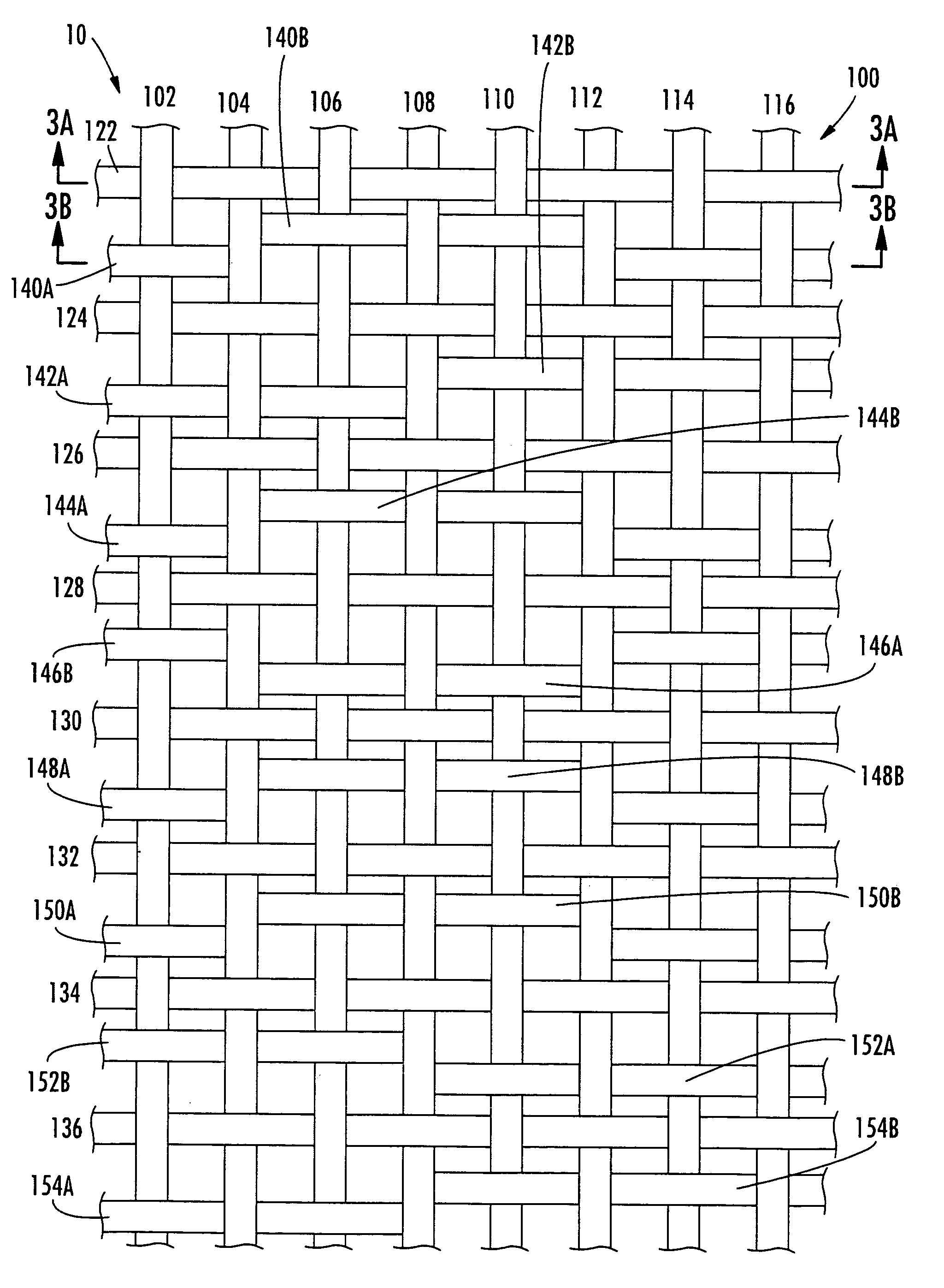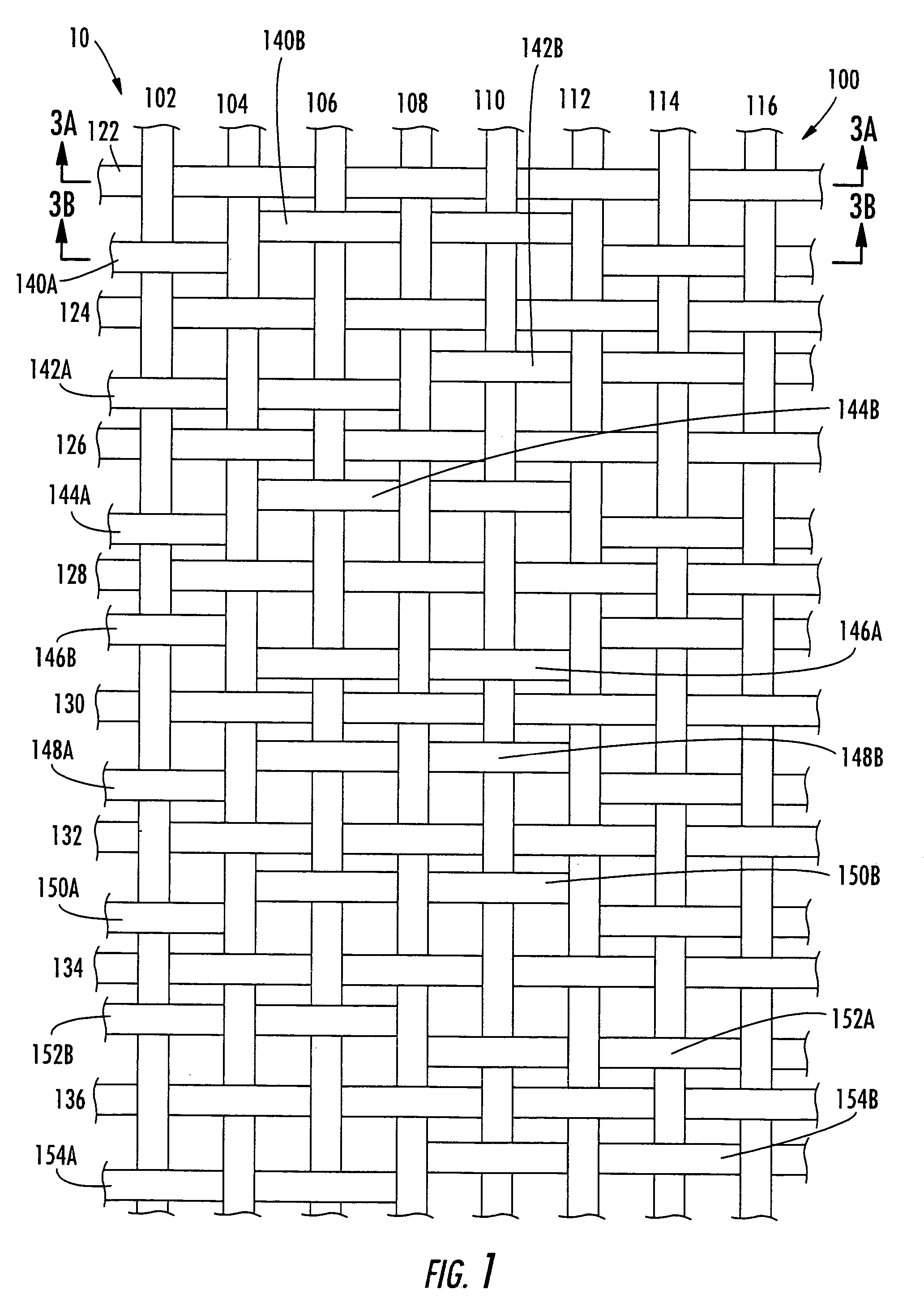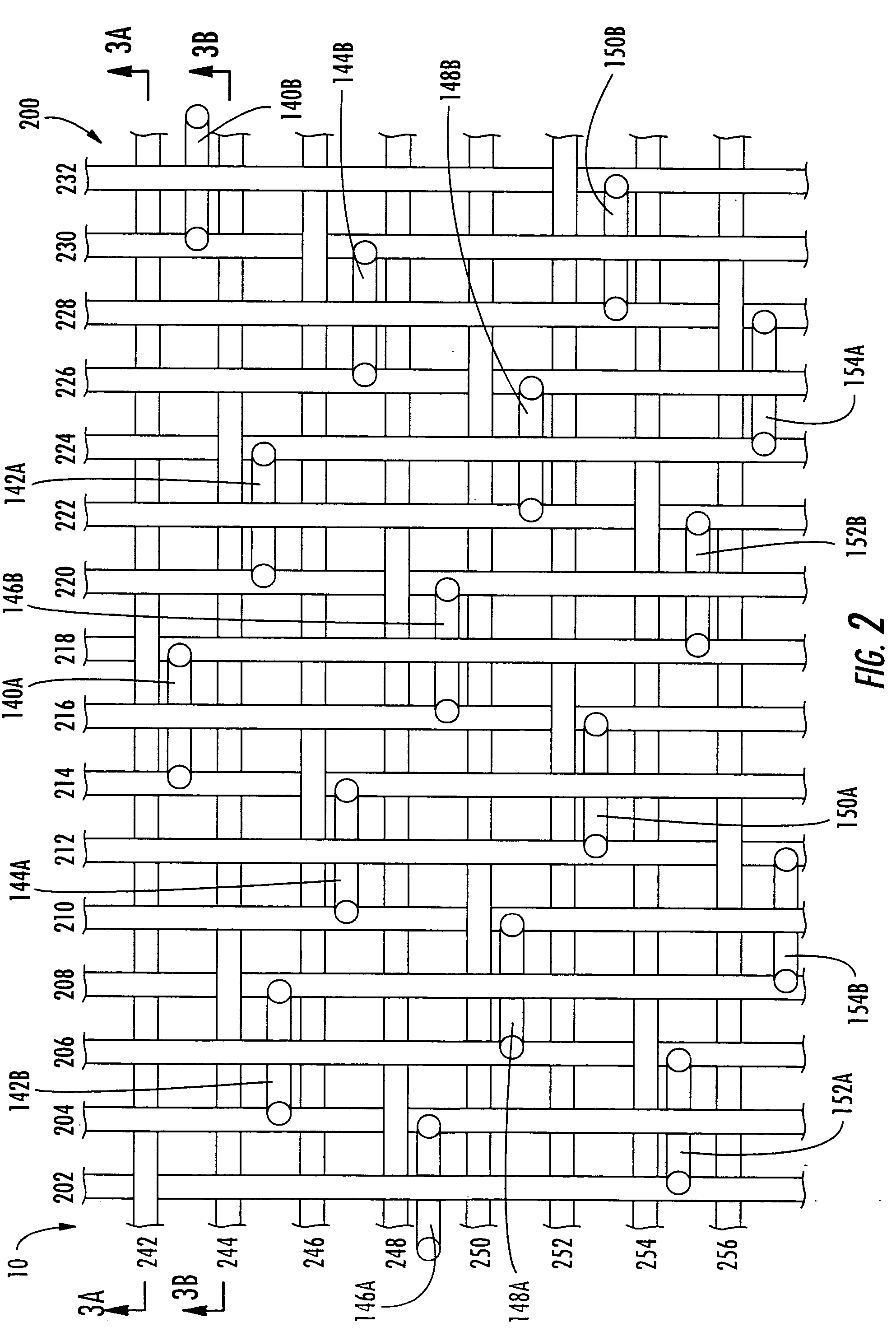Papermaker's forming fabric with twice as many bottom MD yarns as top MD yarns
a technology of forming fabric and bottom md yarn, which is applied in the field of woven fabrics, can solve the problems of short surface life of the fabric, negatively affecting both the service life and the performance of the fabric, and particularly problematic wire marking, and achieves the effect of tensile strength and resistance in the machine direction
- Summary
- Abstract
- Description
- Claims
- Application Information
AI Technical Summary
Benefits of technology
Problems solved by technology
Method used
Image
Examples
Embodiment Construction
[0031]The present invention will now be described more particularly hereinafter with reference to the accompanying drawings, in which preferred embodiments of the invention are shown. The invention may, however, be embodied in many different forms and is not limited to the embodiments set forth herein; rather, these embodiments are provided so that the disclosure will fully convey the scope of the invention to those skilled in the art. Like numbers refer to like components throughout. The dimensions and thicknesses for some elements and the spacing between elements may be exaggerated for clarity.
[0032]A twenty-four harness triple layer forming fabric, generally designated at 10, is illustrated in FIGS. 1, 2 and 3A–3B in which a single repeat unit of the fabric 10 is shown. The repeat unit of the fabric 10 includes a top layer 100 (FIG. 1) and a bottom layer 200 (FIG. 2). The top layer 100 and a bottom layer 200 are stitched together by stitching yarn pairs 140A, 140B, 142A, 142B, 14...
PUM
 Login to View More
Login to View More Abstract
Description
Claims
Application Information
 Login to View More
Login to View More - R&D
- Intellectual Property
- Life Sciences
- Materials
- Tech Scout
- Unparalleled Data Quality
- Higher Quality Content
- 60% Fewer Hallucinations
Browse by: Latest US Patents, China's latest patents, Technical Efficacy Thesaurus, Application Domain, Technology Topic, Popular Technical Reports.
© 2025 PatSnap. All rights reserved.Legal|Privacy policy|Modern Slavery Act Transparency Statement|Sitemap|About US| Contact US: help@patsnap.com



